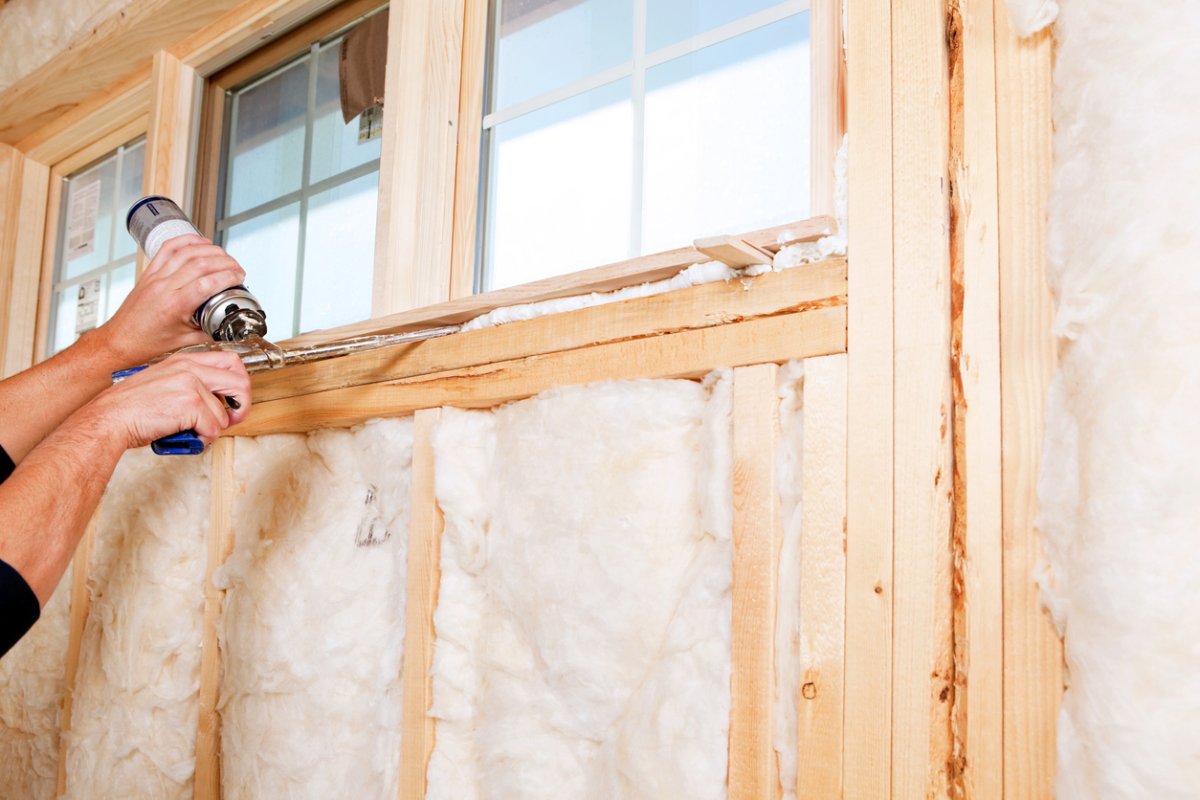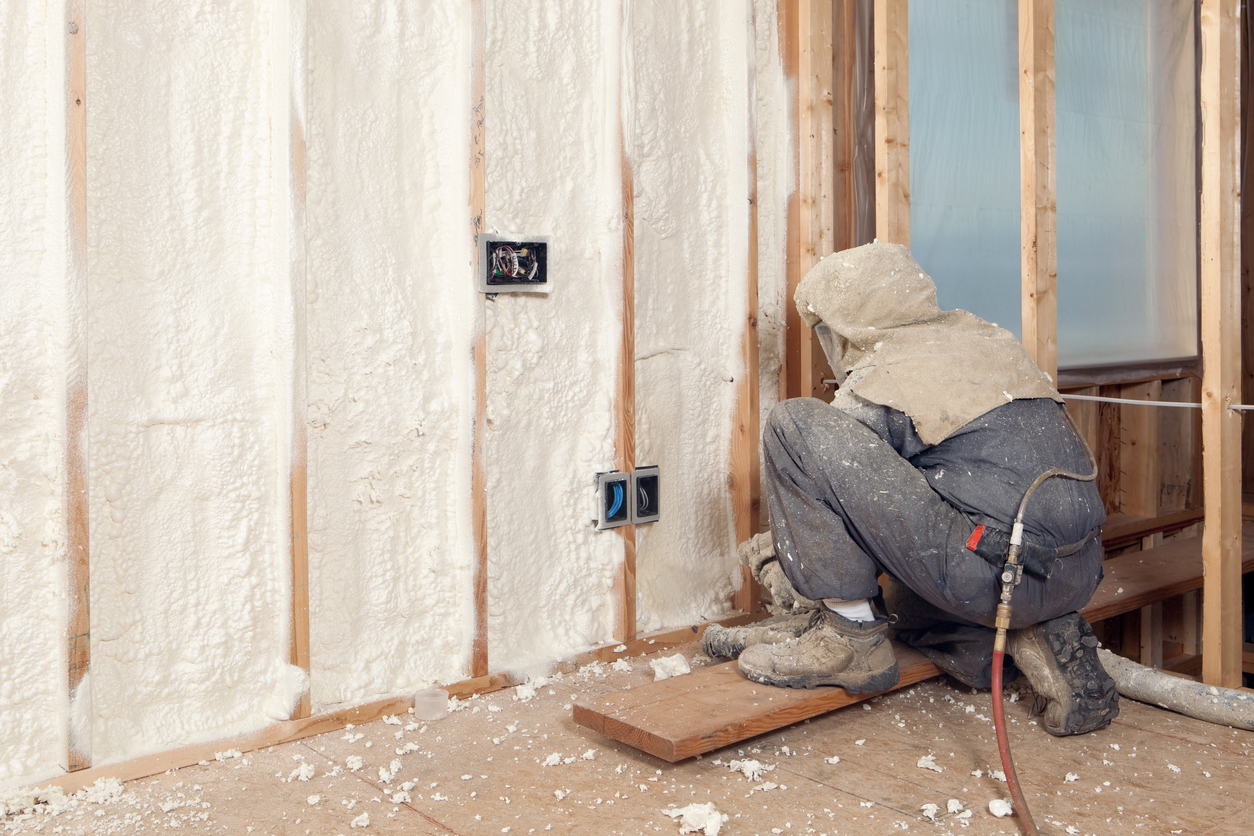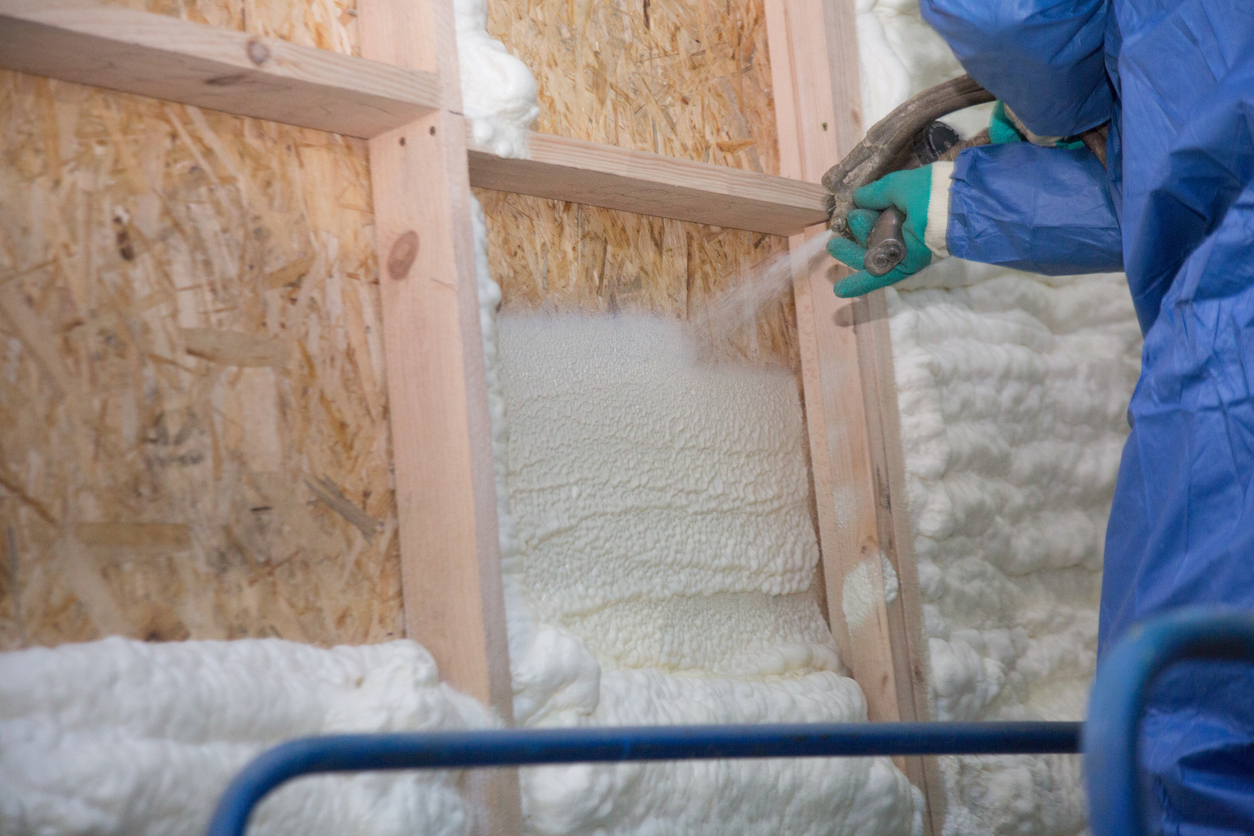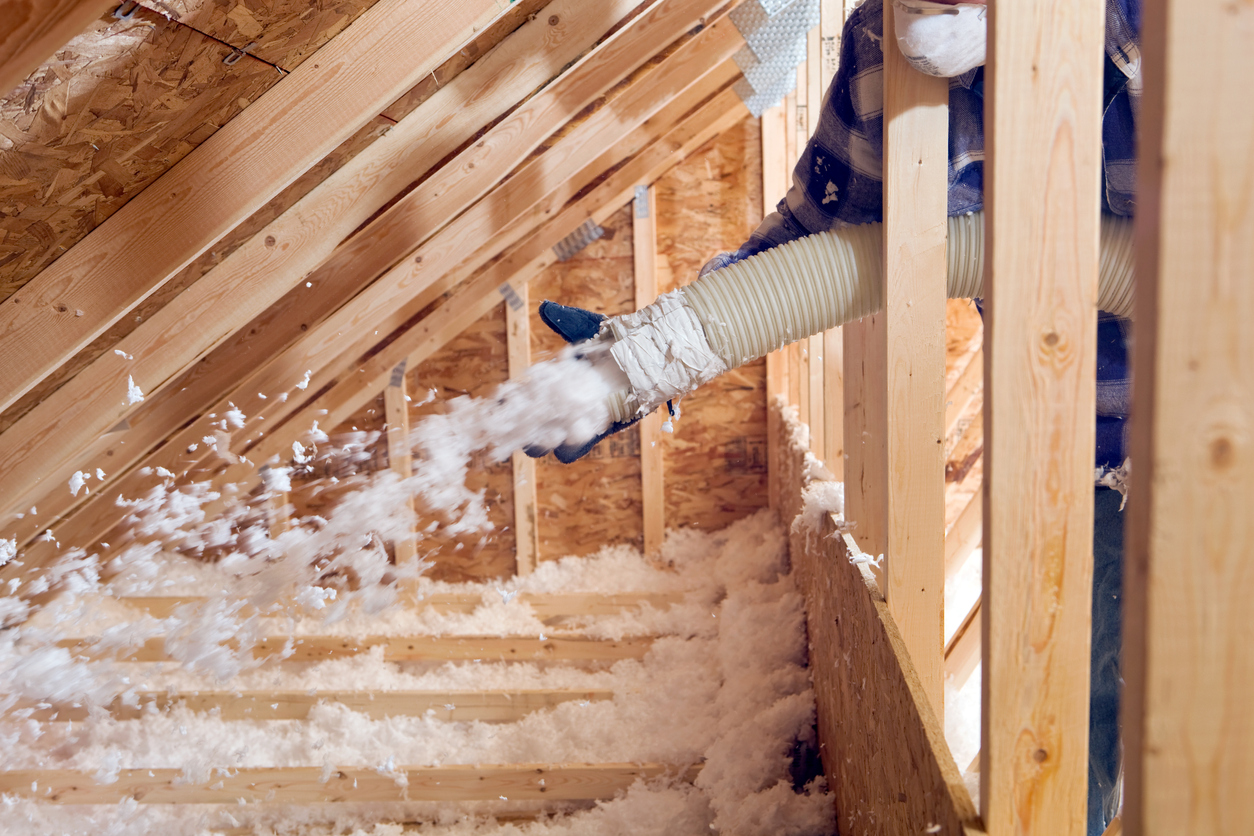

We may earn revenue from the products available on this page and participate in affiliate programs. Learn More ›
Not all insulation is created equal, especially for those who live in particularly hot or cold climates. Two of the most popular options are spray foam and fiberglass. However, there’s a big cost disparity between the two. For those debating spray foam insulation cost vs. fiberglass, the following can help narrow down the choice based on effectiveness, sustainability, budget, and overall value. Once a decision has been made, the best insulation contractors can help install the right option.
Spray Foam Insulation vs. Fiberglass Insulation
Spray-in foam insulation is an insulation material that is made of a polyurethane liquid that expands to fill the inside of stud walls, rafters, and joint spaces. Since it fills a space, spray foam roof insulation installation is common. It has a high R-value (which is the measure of how well a material insulates; the higher the R-value, the better), but foam insulation prices make it the most expensive to install. Just how much is spray foam insulation? It ranges between $0.44 and $1.50 per board foot (1 foot by 1 foot by 1 inch). It also comes in open-cell and closed-cell variations, with open-cell expanding to fit smaller corners and crevices and closed-cell a heavier, more efficient material that also is moisture-resistant. Spray foam attic insulation costs will be lower than insulation installed behind finished walls.
Fiberglass insulation is much more affordable than spray foam insulation and easier to install, but it is more permeable than spray foam. Like its name suggests, fiberglass insulation consists of fine glass fibers and comes in a variety of forms, from blanket and loose-fill to rigid boards. Batt and rigid insulation R-values will be higher than that of blown-in insulation because the material is denser.
How to Estimate Insulation Costs
Calculating the cost of insulation is relatively easy, so long as you have a good measuring tape and a calculator. It’s wise to first measure the width and height of the wall and multiply the two numbers together to get the area. Then, multiply the area of the wall by the depth of the stud space.

For example, if the wall has 2×4 studs, the stud space will be 3.5 inches thick. Multiply this number by the area, which will determine the number of board feet that will be filled with either spray foam or fiberglass insulation. The cost of spray foam insulation for filling a 3.5-inch-thick wall ranges from $123 to $182 if using open-cell and will increase for closed-cell. Even cheap foam insulation board will cost more than fiberglass batt insulation.
Spray Foam Insulation Costs vs. Fiberglass Insulation Costs
One of the major contributing factors to homeowners considering spray foam or fiberglass insulation is the cost. Generally, spray foam is more expensive than fiberglass, and open-cell spray foam is less costly than closed cell.
- Open-cell spray foam insulation: $0.44 to $0.65 per board foot
- Closed-cell spray foam insulation: $1.00 to $1.50 per board foot
- Fiberglass batt insulation: $0.30 to $1.50 per square foot
Insulation Costs by Area
The area of the home being insulated can affect the price a customer pays for an insulation project. The costs to insulate select areas of the home are as follows:
- Basement: $1.50 to $2.50 per square foot
- Attic: $1,500 to $6,000
- Roof: $1,500 to $4,500
- Walls: $1 to $4 per square foot
1. Spray foam insulation is the most expensive type of insulation and has a high R-value.
Best for adding insulation to finished areas, spray foam insulation projects cost an average of around $2,500, which makes this type of insulation the most expensive type. Part of the reason this type of insulation costs more is due to its high R-value, which is an indicator of how well the insulation keeps heat from leaving or entering the home. For example, closed-cell foam insulation has an R-value of up to 7 per inch of thickness, compared to cheaper fiberglass insulation that has an R-value of up to 3.8 per inch of thickness. (For comparison, 2-inch foam insulation board has an R-value of about 7.7, and blown-in cellulose insulation has an R-value of 3.8.) The higher the R-value, the more likely it is to save on heating and cooling bills.

2. Spray foam insulation has the highest ROI of all insulation materials.
While homeowners will pay more up front to install spray foam insulation, it will pay off in the long run due to reduced energy costs. Depending on the size of the space, geographic location, and the home’s energy usage, homeowners could see a return on investment in as little as 3 to 5 years.
This is especially true for foam insulation panels installed in the attic, where energy tends to get lost more easily in cold climates. Although the average cost of spray foam insulation may be higher than for any other type of insulation, it can result in 10 to 15 percent savings in newer, already insulated homes and up to 30 percent savings in older, poorly insulated homes.
3. Fiberglass batts are the most economical form of insulation.
There’s a reason fiberglass batts are used in about 85 percent of homes, and the main reason is the insulation’s low cost. It’s the most common form of insulation used on the market, especially since the material is easier for expert DIYers to handle themselves. If budget is the main concern, fiberglass will likely be the best option for the home. At an average cost of $0.30 to $1.50 per square foot, fiberglass insulation is one of the more affordable ways to insulate a home. As opposed to spray foam insulation cost per square foot, fiberglass insulation falls on the lower end, which is why it tends to be a more appealing option for those working on a tighter budget.
4. Fiberglass insulation typically has low installation costs.
Of all the types of insulation, fiberglass costs the least per square foot and since it comes in thick sheets, it can also be installed quicker, which can lead to lower fees for labor. For example, installing fiberglass insulation in a 500-square-foot section of the home can cost anywhere from $150 to $750. Plus, this type of insulation is easier for experienced DIYers to install, so those who are comfortable taking on the project themselves could save on labor costs.

5. Both spray foam and fiberglass insulation can last for over 80 years, but fiberglass is susceptible to moisture.
As long as it’s not exposed to moisture, fiberglass insulation can last anywhere from 80 to 100 years. The same is true for spray foam insulation; however closed-cell spray foam is watertight. When fiberglass comes in contact with moisture, either from extreme weather or a busted pipe, the fibers tend to clump and lose their effectiveness. If the fibers get too wet, they may even need to be replaced altogether. For those who live in an area with high humidity or the potential for heavy rainfall or dangerous storms, spray foam insulation may be worth the higher cost.
6. Improving a home’s energy efficiency may offer tax benefits.
Effective January 1, 2023, those who add insulation to their home are eligible to receive a tax credit of 30 percent of the cost of the material up to $1,200. This is part of the government’s residential efficiency tax credit, which lists spray foam insulators and fiberglass as materials that qualify for the credit. To receive the credit, homeowners will need to hold on to their receipt for materials and claim the credit through form 5695 when filing annual taxes.
7. Adding insulation can increase a home’s value.
If increasing the value of a property is a priority, adding insulation is a proven way to make the space more appealing to potential buyers. Some reports have indicated that extra insulation can result in a 2 to 6 percent increase in the overall value of a home, which can turn into more money in sellers’ pockets should they decide to invest in their homes’ energy efficiency with more insulation.
8. Spray foam insulation can have a high environmental cost.
Spray foam insulation is typically made of petroleum and uses hydrofluorocarbon blowing agents—both elements that have proven to be damaging to the environment. Because the chemicals in the insulation release heat when they cure, it can release extremely toxic dioxins if it burns. Homeowners who are selecting insulation with sustainability in mind will want to consider fiberglass or recycled insulation, which may be a better choice in the long run.
Sources: HomeWorks Energy, Paragon Protection, HomeLogic, Diffen, attainableHOME, Today’s Homeowner
